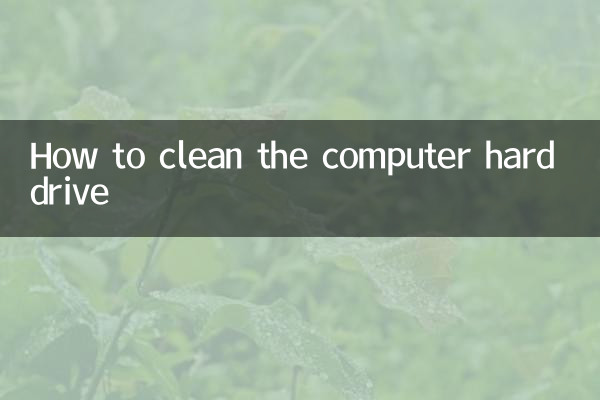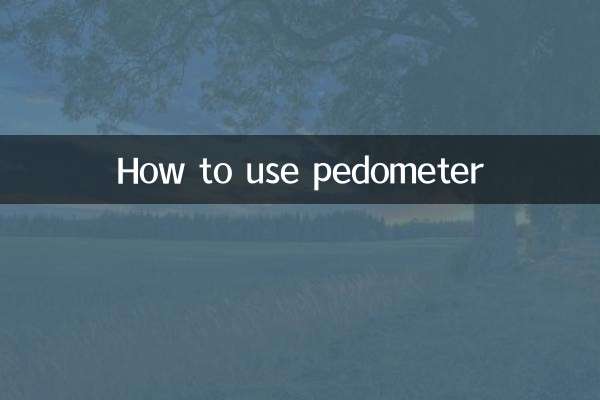How to clean the computer hard drive
As the computer usage time increases, more and more junk files, temporary files and useless data will accumulate in the hard disk, causing the system to run slowly and insufficient storage space. This article will introduce you in detail how to clean your hard drive efficiently, free up space and improve computer performance.
1. Why should you clean your hard drive?

Cleaning your hard drive not only frees up storage space, but also speeds up your system. The following are possible problems caused by insufficient hard disk space:
| question | Influence |
|---|---|
| System is running slowly | Program response is delayed and boot time becomes longer |
| Not enough storage space | Can't install new software or save files |
| System crash risk | Insufficient virtual memory causes blue screen or crash |
2. Common methods for cleaning hard drives
Here are a few effective ways to clean your hard drive, available on Windows and Mac systems:
| method | Operation steps | Effect |
|---|---|---|
| Use the system’s own tools | Windows: Disk Cleanup Tool Mac: Storage management tools | Quickly delete temporary files and system junk |
| Manually delete large files | Find and delete large files via Explorer | Targeted release of large amounts of space |
| Uninstall uncommon software | Uninstall via control panel or application folder | Free up software space |
| Clear browser cache | Clear cache and history in browser settings | Reduce the space occupied by your browser |
3. Detailed cleaning steps (taking Windows as an example)
1.Use disk cleanup tool
Press Win+S, search for "Disk Cleanup", select the drive to be cleaned, check the file types to be deleted (such as temporary files, recycle bin contents, etc.), and click "OK".
2.Delete large files
Use Explorer's search function to sort files by size and delete unnecessary large files (such as videos, backup files, etc.).
3.Clean system restore points
Click "Clean System Files" in the Disk Cleanup tool, select the "More Options" tab, and click the "Clean" button under "System Restore and Volume Shadow Copy".
4.Use storage sense
Go to Settings > System > Storage and turn on the "Storage Sense" function to let the system automatically clean up temporary files.
4. Precautions before and after cleaning
| Things to note | illustrate |
|---|---|
| Back up important data | Make sure important files are backed up before cleaning |
| Delete system files with caution | Do not delete files you are unsure of |
| Clean regularly | It is recommended to clean it once a month |
| Use professional tools | Tools like CCleaner can clean more thoroughly |
5. Advanced skills
1.Clean using the command line
Advanced users can use the command prompt to run the "cleanmgr /sageset:65535 & cleanmgr /sagerun:65535" commands for a more thorough cleanup.
2.Analyze disk space usage
Use tools such as WinDirStat or TreeSize to visually display the space occupied by each folder to facilitate targeted cleaning.
3.Move user folder location
Transfer folders such as documents and downloads to other partitions or external storage devices to reduce system disk pressure.
6. Frequently Asked Questions
| question | answer |
|---|---|
| No significant increase in space after cleaning? | There may be large files that have not been found, use disk analysis tools to check |
| Which files are safe to delete? | Temporary files (.tmp), browser cache, recycle bin contents, etc. |
| Will cleaning affect system stability? | Correct operation will not, but avoid deleting critical system files |
Through the above methods, you can effectively clean up your computer hard drive, free up valuable storage space, and make your computer run more smoothly. It is recommended to develop the habit of regular cleaning to maintain the best performance of the system.

check the details

check the details